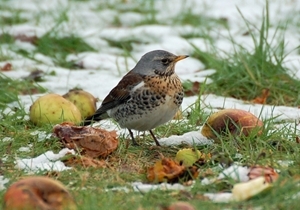 It’s that time of year again when the GWCT is promoting its Big Farmland Bird Count (BFBC) to farmers and land managers, which in 2018 will take place between the 9 and 18 of February. But why should you bother?
It’s that time of year again when the GWCT is promoting its Big Farmland Bird Count (BFBC) to farmers and land managers, which in 2018 will take place between the 9 and 18 of February. But why should you bother?
The recent publication by Defra of the up-to-date assessment of UK bird populations shows clearly that many birds that rely on farmland to survive are still having a hard time (see the report here). In the five-year period from 2010 to 2015 alone, lapwing declined by 17% and grey partridge by 15%, suggesting that previous attempts to assist farmland bird species, through agri-environment schemes and greening measures for example, have not been wholly successful.
That said, we do know that there are many farmers across the country who are doing fantastic things for wildlife on their farms, creating ideal habitats for many birds and other wildlife, like wild bird seed crops, grass margins and new hedgerows. Seed-bearing crops grown for wintering birds are known to attract huge flocks in winter and can provide impressive views of finch and bunting flocks, perhaps with thrushes too – including the winter-visiting fieldfare and redwing. That successes such as this have still not been translated into increases in farmland bird populations is a challenge that policy makers must deal with – perhaps Brexit will be the turning point?
But this is where the BFBC comes in. All too often farmers are unfairly bashed for damaging the environment and having an apparent disregard for the impacts of their actions on the countryside. The BFBC offers the ideal opportunity to showcase what a fantastic job many land managers are doing for wildlife on their ground. By simply watching a small area for just 30 minutes, recording what they see, farmers can provide evidence of the wildlife they have nurtured, and the GWCT will make a lot of noise about it!
Full details of the count can be found here. To aid farmers in this, the GWCT is also organising bird ID days ahead of the count, to help identify farmland bird species, especially some of those that can be hard to separate. In Scotland, this will be held at our flagship demonstration site at GWSDF Auchnerran on 26 January (details here). Please come along if you can and please count the birds on your patch to show what can be achieved!